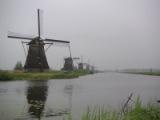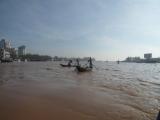![]()
![]() GLOBAL WATER DYNAMICS
GLOBAL WATER DYNAMICS
![]()
![]() GLOBAL WATER DYNAMICS
GLOBAL WATER DYNAMICS
Hori Labratory
Water Resources Research Center, Disaster Prevention Research Institute, Kyoto University
(Water Resources Engineering, Department of Urban Management, Graduate School of Engineering, Kyoto University)




The research is focused on the analyses of interaction among global water dynamics and human activities seeking solutions for water resources issues. The current research topics are development of global water dynamics model including social and economic activities, and downscaling of global hydrologic information for estimation of temporal and spatial distribution of water resources.
Moreover, in order to develop prevention and mitigation system of water-related hazards, which will be worsening as a result of global change, regional preparedness and human response to floods and droughts are also investigated.
Focused research topics are named as follows.
When thinking about water resources issues, global point of view is indispensable because water circulation, which is governing phenomena of water problems, is a global scale natural process. It should also be noted that impacts of local water problems can be easily propagated worldwide by global network of economy. Sources of driving force of global change such as greenhouse gas are widly spread all over the world and then the change cannot be managed by a country or a region effort.
On the contrary, water resources problems are highly regional problems. It is difficult to convey fresh water from one place to another. Rainwater which falls onto ground surface can only move within a catchment scale. Therefore regional-based or community-based point of view is importnat for management of water resources systems.
From these viewpoints, our lab is trying integrative modeling of natural phenomena of water cuirculation and socio-economic phenomena of human actvities under various temporal and spatial scales for the analysis of water resources problems.

Water dynamics model considering water resources,
population, industrial and agricultural outputs.
(Back)
There is a growing concern about catastrophic flood disasters, the scale of which exceed the design level of mitigation systems, as a consequence of global warming. Emergency response by residents and community is getting more important to prevent and to mitigate damage caused by large floods. There are also many regions where construction of large scale flood cntrol facilities is difficult for geographical, ecomical or environmental reasons.
A computer model to simulate residents' evacuation is being developed. The system comprises mainly three part: a mental decision process model, a moving model and a communication process mode. The mental model treats the resident's decision about action based on their attitude to the flood risk and obtained information. The moving model simulate people's action of traveling to evacuation centers, which is affected by inundation water dynamics. The communication model simulates the information transmission from manicipalities to residents and information interchange in the community.
Taking advantage of these simulation models, it comes to be possible to analyze how the social systems for disaster mitigation work in variuos situations.

Flood evacuation simulation model
based on digital modeling of street network.
(Back)